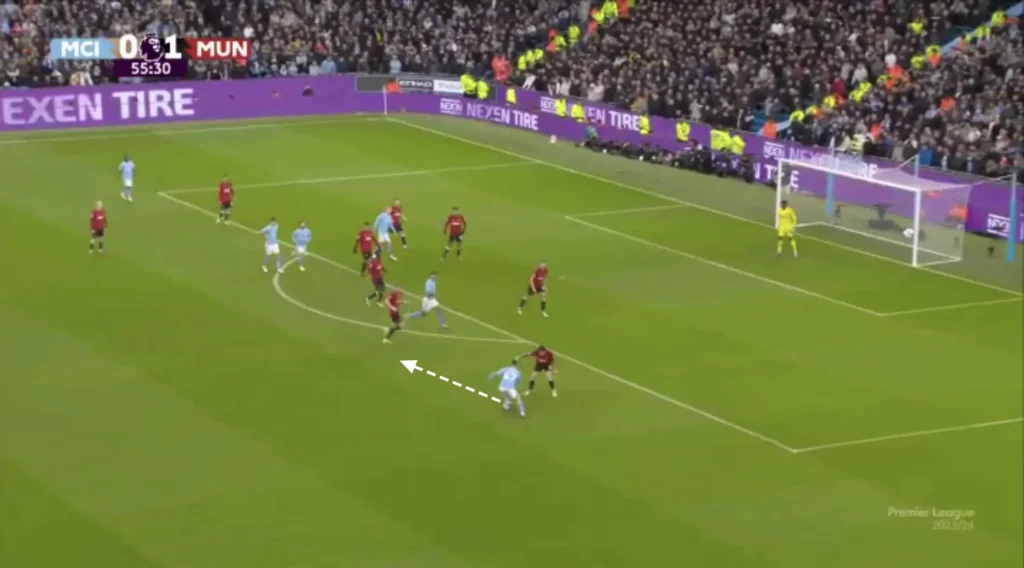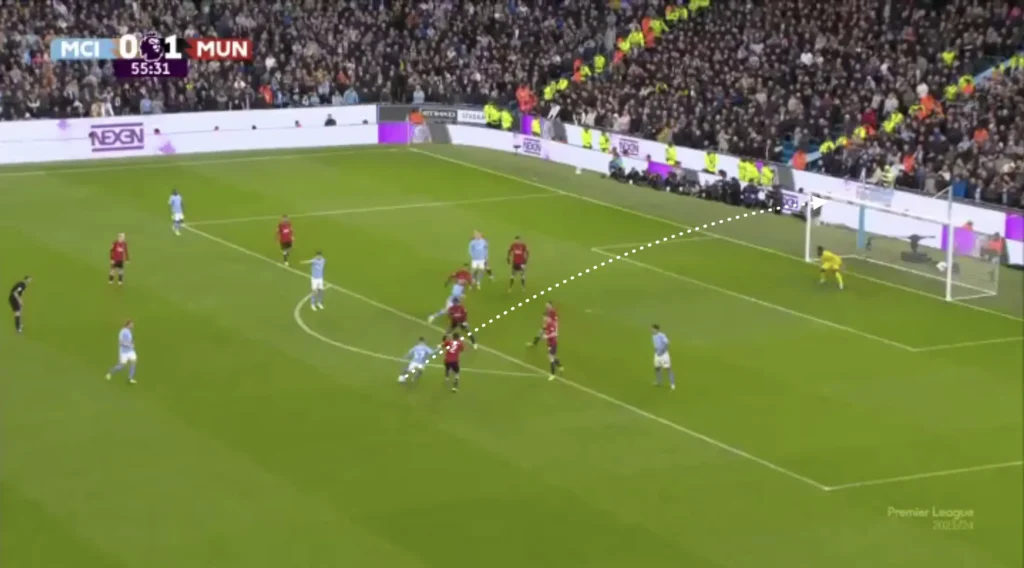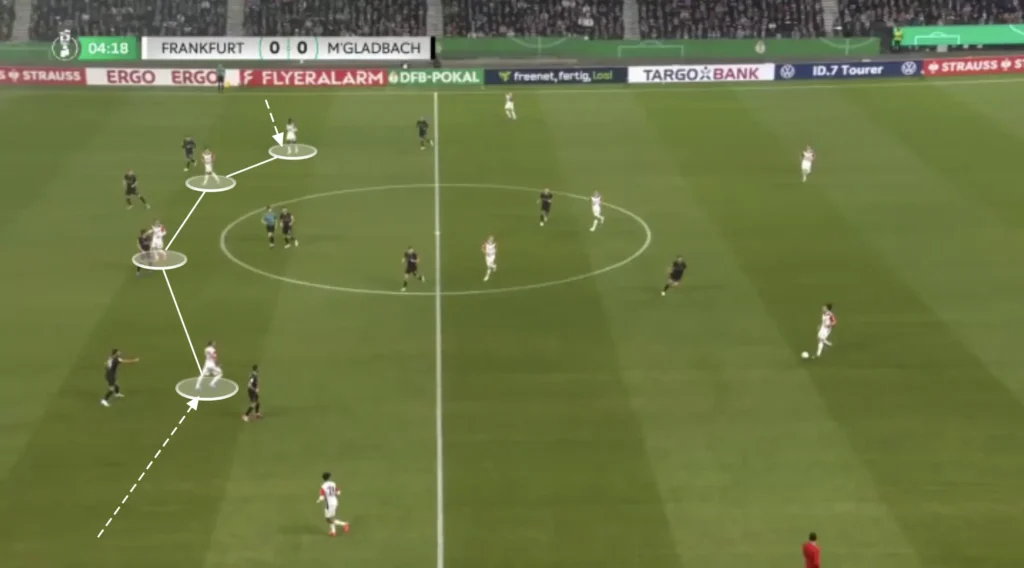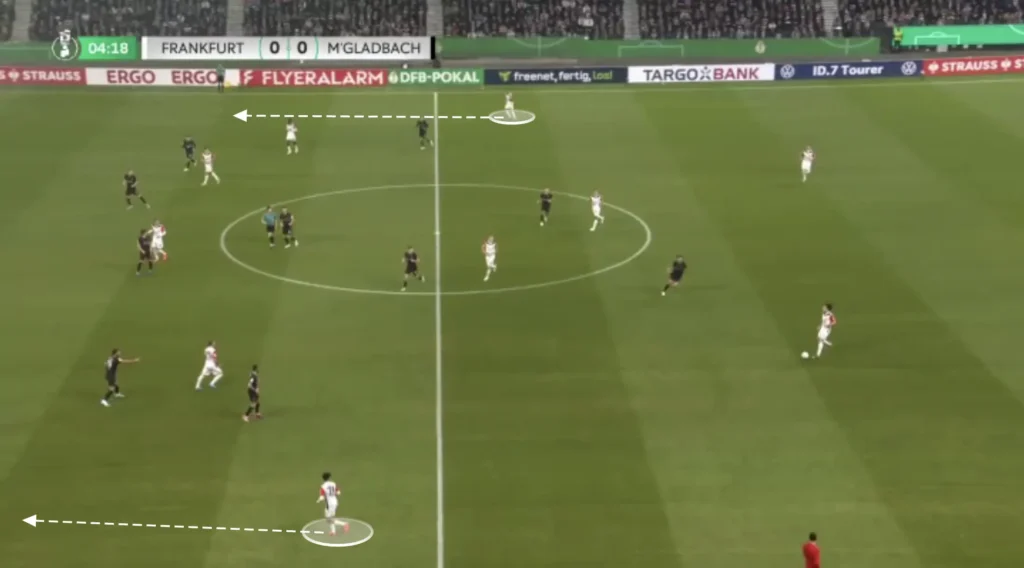In modern football, tactical evolution has brought significant attention to the use of “half-spaces.” These zones have become a critical area for creating attacking opportunities, facilitating positional play, and breaking down defensive structures. In this article, we will explore what half-spaces are, why they matter, and how players and teams utilize them effectively.
What Are Half-Spaces?
Half-spaces are the vertical channels located between the central and wide areas of the pitch. If we divide the field into five vertical lanes — left wing, left half-space, central zone, right half-space, and right wing — the half-spaces are the lanes adjacent to the central zone. They occupy a unique position on the field that offers a blend of centrality and width, providing players with tactical flexibility.
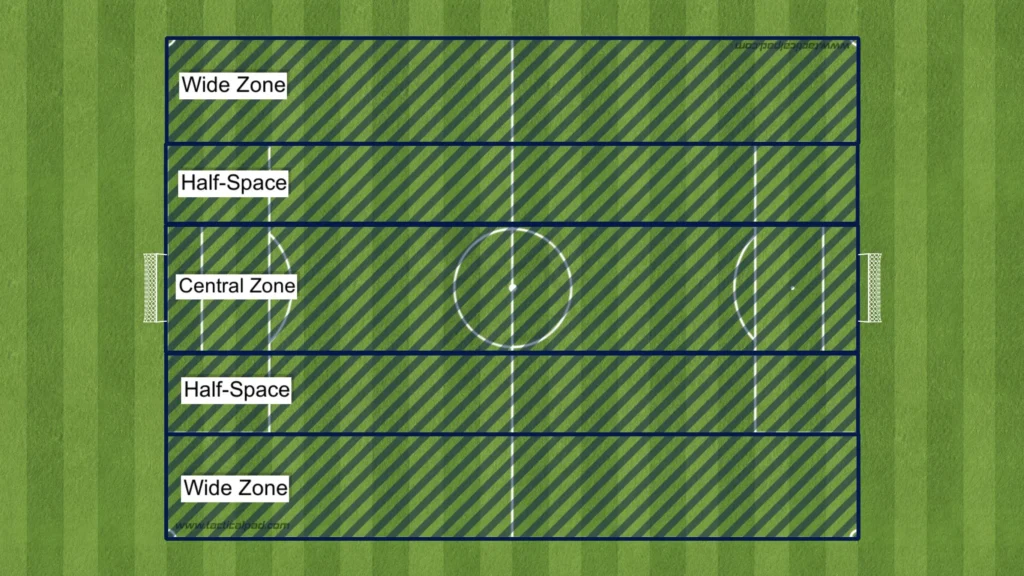
Unlike the central zone, which is often crowded with defenders, and the wings, which are more isolated, the half-spaces strike a balance between proximity to goal and freedom of movement. These zones are especially valuable in breaking down compact defensive blocks and facilitating creative play. The concept of half-spaces gained prominence with the rise of positional play (“juego de posición”) and the strategic innovations of coaches like Pep Guardiola and Julian Nagelsmann.
Why Are Half-Spaces Important?
1. Positional Advantage
Half-spaces allow players to operate in areas where they can influence multiple zones of the pitch. A player in a half-space can combine with teammates in central and wide areas, creating triangles and diamonds that facilitate quick passing sequences. This positional advantage can disorganize defensive lines and open up spaces elsewhere on the field.
By occupying these areas, teams create numerical superiority or at least positional dilemmas for defenders. For instance, a fullback might hesitate to step inside to mark a player in the half-space, as this could leave the winger unmarked on the flank. Therefore, players in the half-space can often turn and progress the ball when receiving it.
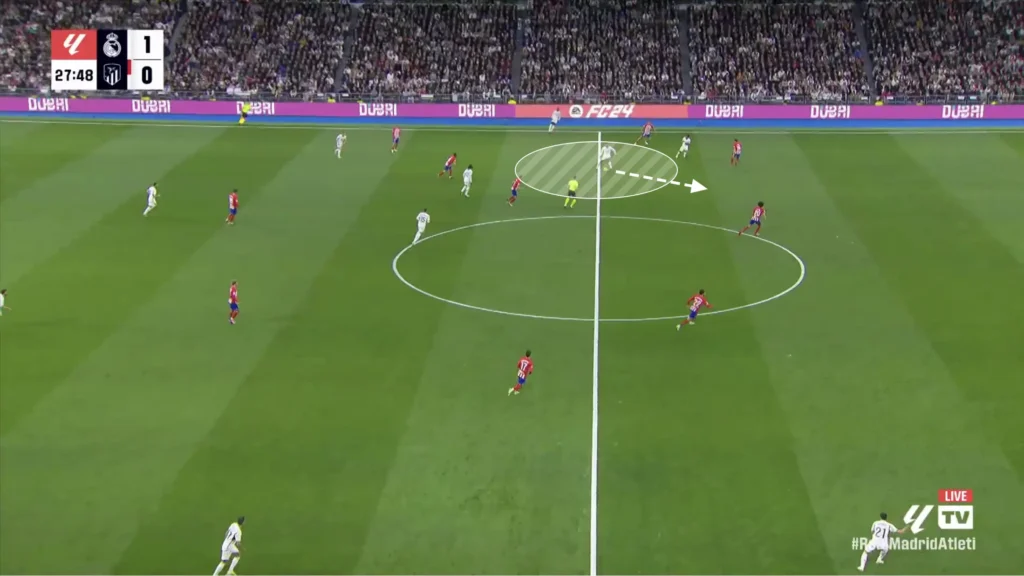
2. Breaking Defensive Lines
Operating in half-spaces helps players exploit gaps between opposition defenders. Attacking midfielders and forwards often position themselves in these zones to receive the ball between the lines, turning and driving at the defense. This can force defenders to step out of position, creating opportunities for runs in behind or openings in other areas.
For example, when the defending team is positioned on one side, the weak-side fullback becomes vulnerable to the switch of play due to the 1v2 against the attacking midfielder in the half-space and the winger out wide. The defending fullback will often come in to control the midfielder, which leaves space for the winger to be found out wide.
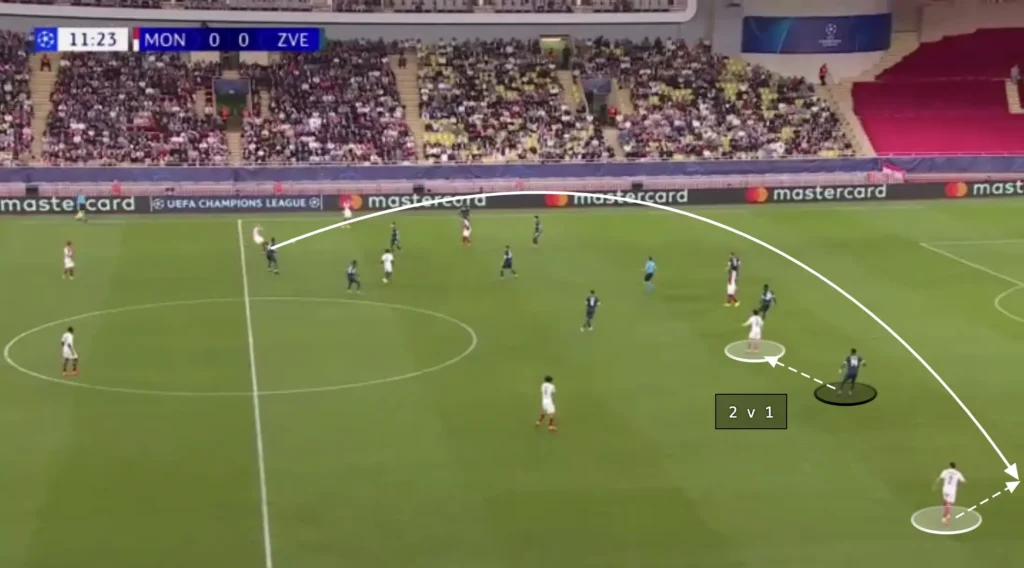
3. Better Angles for Passing and Shooting
Players in half-spaces have better angles for through-balls, crosses, and even shots. For instance, a midfielder in the right half-space can link up with central midfielders, combine with strikers, or deliver incisive passes through tightly packed defenses.
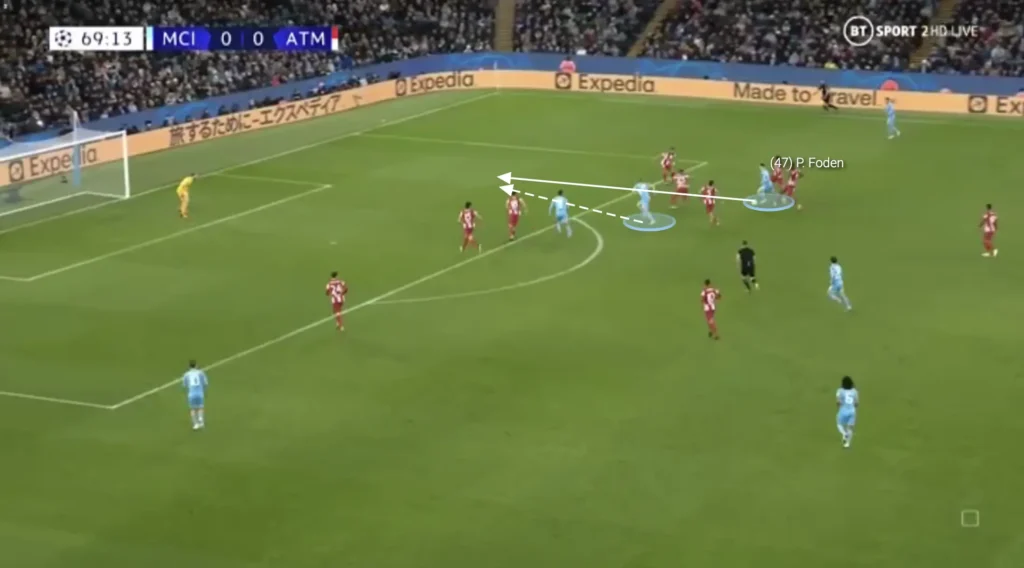
Similarly, these positions provide favorable shooting angles when cutting inside.
Additionally, the diagonal passing lanes that open up in half-spaces are crucial for breaking down defensive blocks. These passes can bypass multiple lines of defense, creating high-quality chances.
4. Dynamic Overloads
Teams can create overloads in half-spaces by positioning multiple players in these zones. For example, a winger drifting inside, combined with an attacking midfielder and a forward, can overwhelm the opposition’s defensive structure. This can lead to quick combinations and goal-scoring opportunities.
Overloading the half-space can also force the opposition to shift their defensive structure, creating space on the opposite flank or in central areas.
How Teams Use Half-Spaces
1. Positional Play
Young coaches like Roberto De Zerbi and Ruben Amorim are masters of exploiting half-spaces through meticulous positional play. They position players in these zones to maintain width and depth while ensuring passing lanes remain open. By occupying the half-spaces, these teams can patiently circulate the ball until a decisive opening emerges.
Pep Guardiola’s teams, in particular, excel at using the half-spaces to manipulate the opposition’s defensive shape. By positioning players in these zones, they create multiple passing options and triangles that allow for quick ball progression.
2. Inverted Fullbacks
Inverted fullbacks often operate in half-spaces when their team is in possession. Instead of hugging the touchline, they move into these zones to provide numerical superiority in midfield. This tactic, popularized by Guardiola, allows teams to dominate the central areas while keeping the wide players high and wide.
For example, players like João Cancelo and Oleksandr Zinchenko have been utilized as inverted fullbacks, stepping into the half-spaces to contribute to midfield build-up and link play.
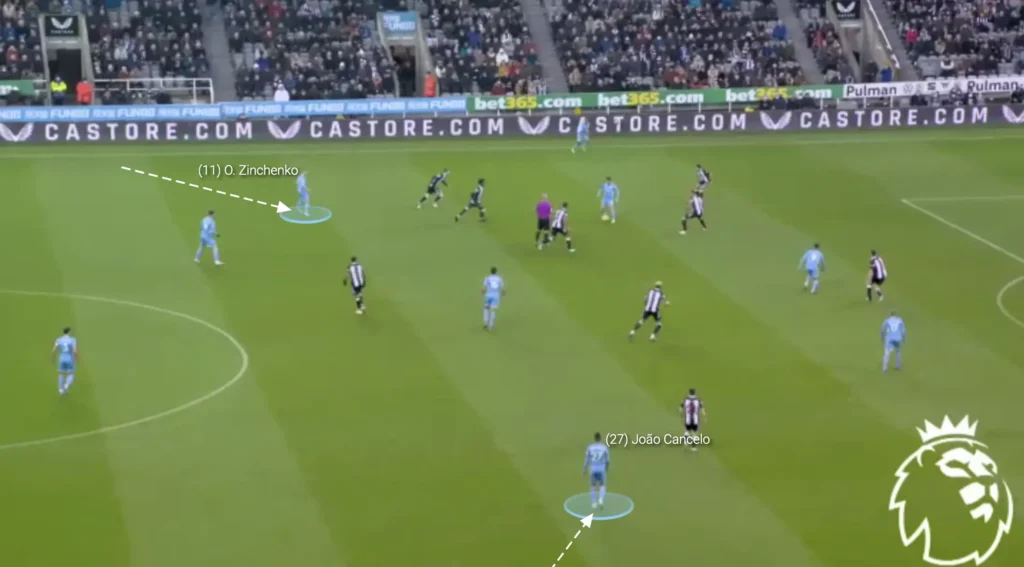
3. Underlaps
Underlapping runs are another way teams exploit half-spaces effectively. These runs involve players making inside runs into the half-space instead of overlapping along the wide areas. Typically executed by attacking midfielders, underlaps can catch defenders off guard and create high-quality chances in central areas.
The underlapping run provides options to:
- Pass to the underlapping player who can drive towards the box and cross or take a shot.
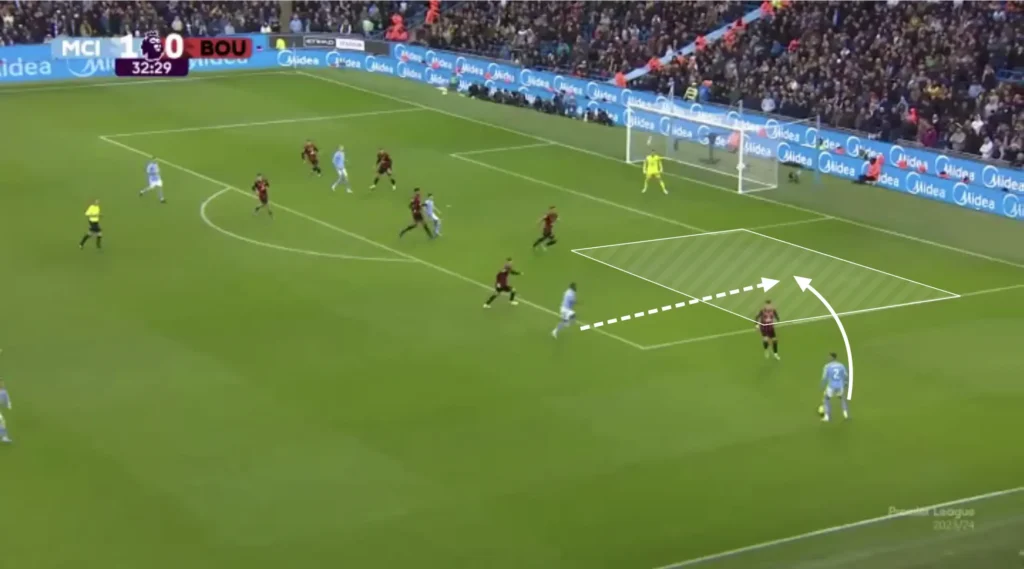
- Force an opposition central midfielder out of position, allowing the winger more space to cut inside and shoot, cross, or find a free player in front of the backline.
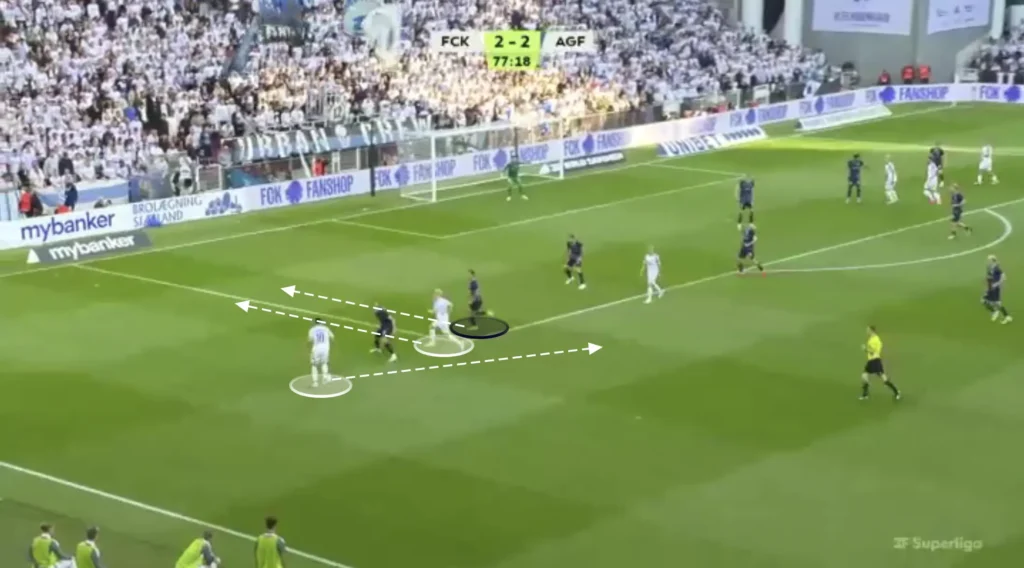
This tactic is especially useful against compact defensive setups, as it draws defenders out of position and opens space for crosses or cutbacks.
4. Attacking Movements
Strikers and wingers frequently use half-spaces to make dynamic runs. A striker dropping into a half-space can pull a center-back out of position, while a winger cutting inside from the flank can exploit this channel to create shooting opportunities. These movements are particularly effective in counter-attacking scenarios.
For instance, When inverted wingers move inside, they vacate the wide areas, creating opportunities for overlapping fullbacks to exploit. This movement can stretch the opposition’s defensive line, as defenders are forced to decide between tracking the winger inside or staying wide to block the fullback’s advance.
5. Build-Up Play
In the build-up phase, teams use half-spaces to progress the ball through the thirds. Center-backs or deep-lying midfielders often pass into these zones to bypass the opposition’s pressing structure. Players receiving the ball in these pockets of space can then turn and advance the play or switch it to the opposite flank.
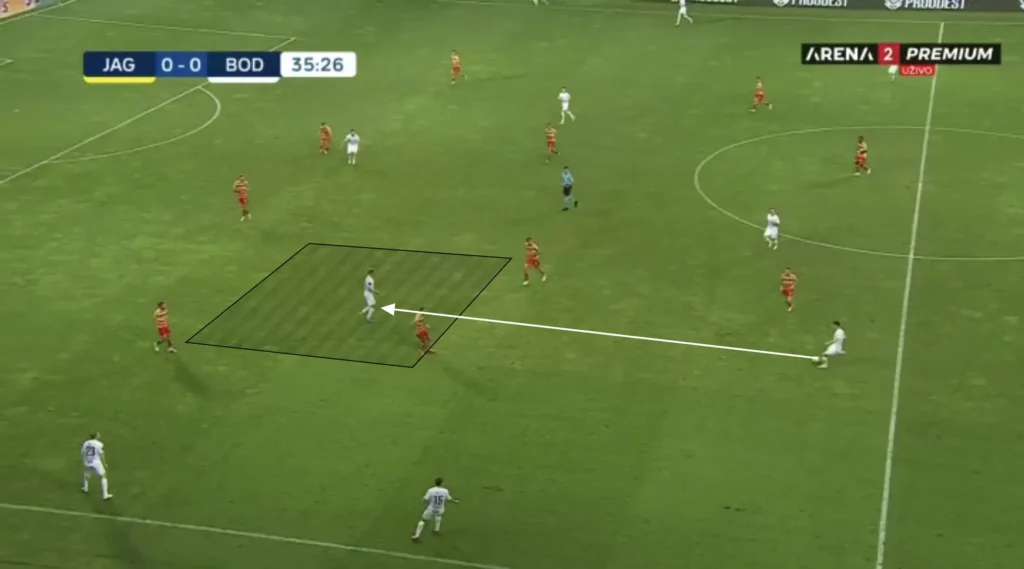
By utilizing the half-spaces in the build-up, teams can create numerical superiority and progress the ball more effectively, even against high-pressing opponents.
Notable Examples of Half-Space Usage
- Kevin De Bruyne (Manchester City): De Bruyne often operates in the right half-space, where he delivers pinpoint crosses and through-balls. His ability to exploit this area makes him one of the most creative players in world football.
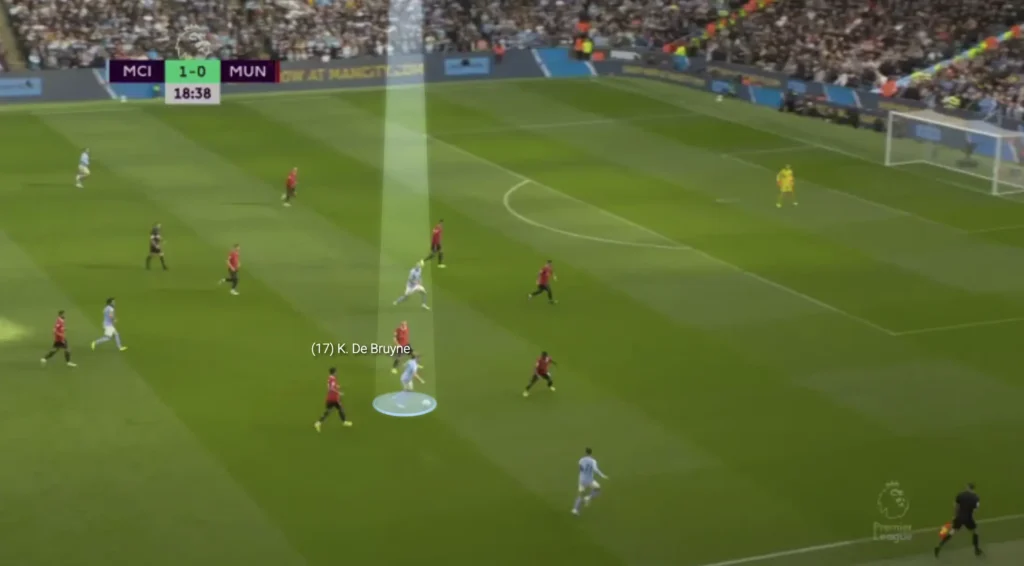
- Thomas Müller (Bayern Munich): Known as the “Raumdeuter” (space interpreter), Müller excels at finding and exploiting pockets of space in the half-spaces. His intelligent movement and understanding of these zones are key to Bayern’s attacking success.
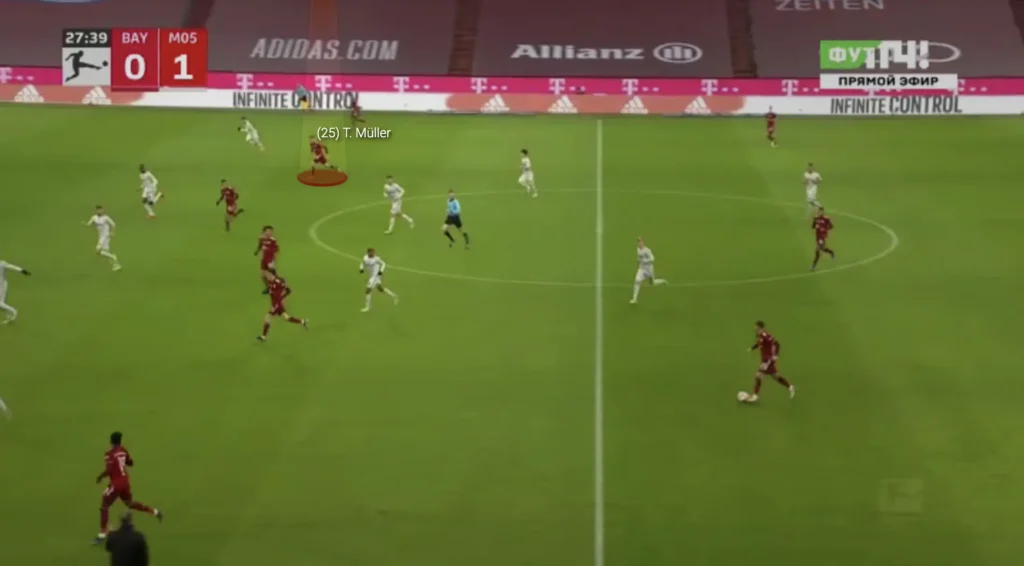
- Lionel Messi (FC Barcelona): Messi’s mastery of half-spaces is unparalleled. His tendency to drift into these areas allows him to combine with teammates, dribble past defenders, and unleash his lethal left foot.
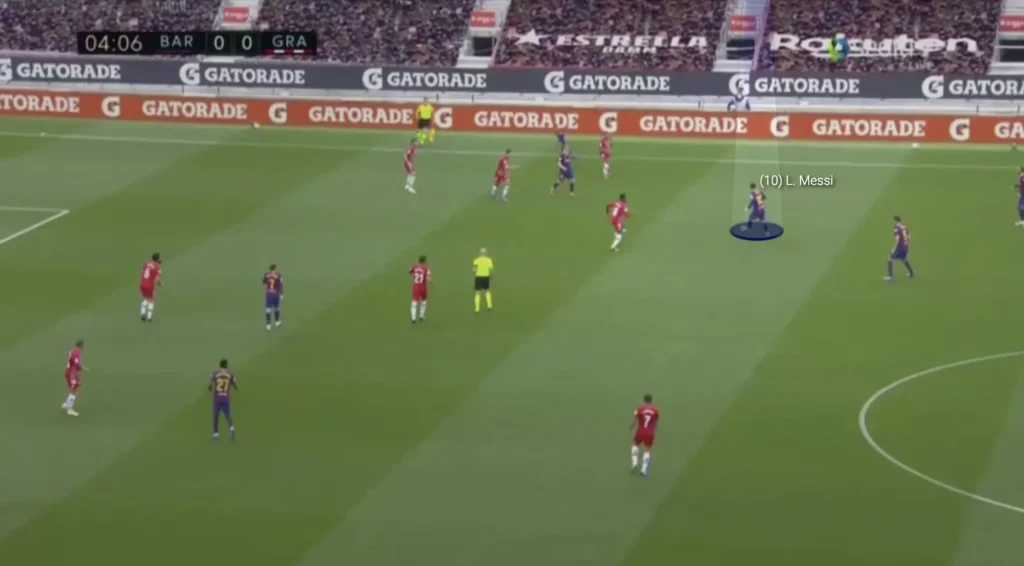
Conclusion
Half-spaces have become a vital component of modern football tactics. By understanding and exploiting these zones, teams can gain a significant edge in both attacking and defensive phases. Whether it’s through positional play, dynamic movements, or creative passing, the effective use of half-spaces is a hallmark of the game’s top teams and players.
For aspiring players and coaches, mastering the nuances of these zones can be the key to unlocking new dimensions in their game. As tactical trends continue to evolve, the importance of half-spaces is unlikely to diminish. Whether you are analyzing matches or developing your own strategies, recognizing the value of these spaces is essential for understanding the modern game.

